 Leading
cargo events is IATA World Cargo Symposium held this year in Bangkok
Thailand March 2-5,2009. Leading
cargo events is IATA World Cargo Symposium held this year in Bangkok
Thailand March 2-5,2009.
Here IATA DG Giovanni Bisignani and IATA Head of Cargo Aleks Popovich
welcome first WCS held in Mexico City in 2007.
Baseball in America has its “World
Series,” much derided by our British cousins in particular. Air
cargo has events that combine exhibitions and conferences, including:
• IATA World Cargo Symposium
• CNS Partnership Conference
• ACF/TIACA
• Air Cargo Americas
Then there are specialized meetings, such
as the Cargo2000 Board meetings; Airports Council International’s
Air Cargo Subcommittee; FIATA’s Air Freight Institute; Transport
Logistic in Munich and others.
Apologies for those not mentioned here
by name – any omission is unintentional.
Were the true key decisions making air
cargo executives to participate in most, if not all, of “the one”,
“the only”, “critical”, “exciting”,
“trend-setting” meeting, it would account for 15% or more
of their time every year, not to mention the costs.
The business climate for 2009 looks nothing
like the expectations for 2008, yet purchasing, production and logistics
functions are more closely interconnected than ever before.
We are going into what is probably a global
recession.
Remember, the Dow Jones average was over
14,000 a little over a year ago! Everything has changed.
Looking at the events listed above in
terms of what they accomplish - not what they advertise, who attends
and why, the picture is instructional.
They differ in no small measure in terms
of structure, locale, objectives and style – all of which drive
attendance.
The IATA World Cargo Symposium, (number
three kicks off in BKK in two weeks) although perceived as a newer event,
is an evolution of the IATA Cargo Week of former years, albeit expanded
and improved by IATA’s dynamic new Head of Cargo Aleks Popovich.
WCS incorporates in its program an element
of regulatory process for maintaining industry-wide standards through
its conferences with the adoption and amendment of resolutions/recommended
practices and their subsequent dissemination in the technical meetings.
This includes the annual meetings of the
cargo services and the cargo agency conferences and their respective
groups.
Much of the rest of the Cargo Symposium,
in my view, is window dressing and fulfills the need of IATA to generate
revenue, first and foremost.
Its “industry priorities“
listed for 2008 identify a single cargo related objective – “Implement
e-freight pilots at 8 additional locations (14 total) by end 2008”.
No fundamental change of the original
format since the mid 90’s.
Comparing the meetings then and now shows
that the E-freight Industry Action Group and the Air Cargo Security
Industry Forum have been added while the CASS Policy Group, Cargo Services
Conference, Cargo Agency Conference, Dangerous Goods Board and Live
Animals and Perishables Board fulfill the annual meeting schedule.
There is a certain dichotomy between serving
your members and the revenue generation aims of the Secretariat, but
that’s a topic in its own right, better left for another time.
A review of a list of Symposium attendees
reveals a mix of airline delegates, vendors participating in the IATA
Strategic Partnership programs (18 companies are currently listed in
cargo services and 8 in cargo standards) and other, non-participating
vendors, postal authorities, airport representatives, forwarders and
the trade press. Regarding executive meetings, by far the most sought
after, cherished and exclusive airline cargo club in the world is considered
to be the IATA Cargo Committee consisting of twelve elected heads of
cargo, a.k.a. “the cargo bulls”. Understandably, while the
vendors are seeking access to its members, because they have budget
authority, the “bulls” are usually well insulated from such
“inconvenience”.
Mere mortal conference delegates can be
lobbied but their influence is rather limited in both policy matters
and purchasing decisions.
What stands out for this observer for
the upcoming 2009 event is that the agenda for the ‘plenary sessions’
as IATA calls them, the third pillar of the Symposium construct, is
eerily devoid of any topics that reflect the current outright scary
business environment with airlines bleeding money and a deepening global
recession looming.
Although IATA Economics analyze “economic
and policy developments affecting the financial performance of the global
airline industry” you need to go elsewhere to discuss the impact
or the means to combat its effects on air cargo. Yet the show must go
on!
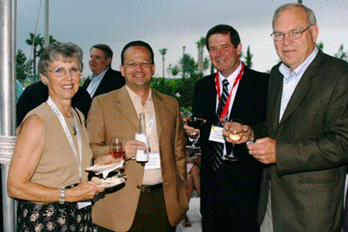 The
CNS Partnership Conference is another one that yours truly has participated
in for many years in various capacities and which has lost its ways
in my humble opinion. The
CNS Partnership Conference is another one that yours truly has participated
in for many years in various capacities and which has lost its ways
in my humble opinion.
As long as its honestly declared objective
was to provide a pure networking and R&R venue for airline cargo
and freight forwarders, with some light sessions and panels, it did
well.
It didn’t pretend to be anything
else, and the golfers always looked forward to it, that is, until it
all changed.
From the perspective of a vendor looking
for business opportunities, the exhibition aspect of this conference
never worked. After several fruitless attempts, the companies I was
involved with dropped it from the potential exhibition agenda for good.
The last CNS with Charlie Rose interviewing
Richard Anderson, the Delta CEO just didn’t fit and looked a bit
as going overboard.
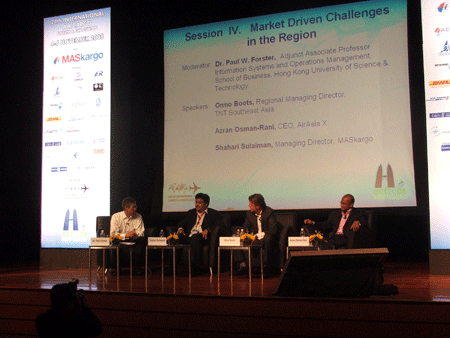 The
aggressive stance of the U.S. authorities in the fuel surcharge scandals
didn’t help and kept foreign attendance to a minimum. The
aggressive stance of the U.S. authorities in the fuel surcharge scandals
didn’t help and kept foreign attendance to a minimum.
The jury is still out regarding any CNS
role in Cargo2000 as well as new leadership.
The chances of it being or becoming a
‘must go’ to event in 2009 aren’t great I’d
say, given the prevailing winds.
ACF/TIACA has been very recently covered
by Geoffrey in depth and in detail with his usual clear eye and straight
talk and a bit of ‘tough love’ all mixed in.
Suffice it to say that apparently the
only positive side of the story is that the TIACA Board is aware the
problem.
In my experience, Cargolux management
usually means one can expect results and it chairs the organization
next year.
We wish them well in stepping up to the
plate again and hopefully bringing back what was a class act.
Speaking of Luxembourg, the 1992 Forum
there remains a vivid picture in my mind for what this event has once
been!
The now defunct Atraxis’ red stand
cum live bar in Washington in 2000 was a definite standout—if
for the wrong reasons.
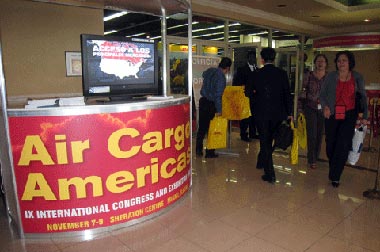 Air
Cargo Americas has been a personal favorite of mine because it has always
succeeded in blending the right mix of business, shop talk, networking
and while never flashy, its solid exhibitions had participants mingling
and walking the aisles throughout the entire event without needing to
be prodded. Air
Cargo Americas has been a personal favorite of mine because it has always
succeeded in blending the right mix of business, shop talk, networking
and while never flashy, its solid exhibitions had participants mingling
and walking the aisles throughout the entire event without needing to
be prodded.
From its humble 1991 beginnings, it retained
a workmanlike hands-on feel. Given its special role and traditional
Latin American component, I think it will continue to serve as a productive
venue for air cargo meetings.
Miami is easy to reach and there are plenty
of reasonable accommodation alternatives.
The halls and every corner and alcove
have always buzzed with animated business discussions, demos and familiar
as well as new faces.
We all attend various events for many
different reasons; this time factoring in the global economic and financial
climate, the “could we just teleconference” is making a
remarkable comeback!
Whereas the basic idea for a conference
is to meet prospective clients, transact some business with several
side meetings set up within a single venue, serve as an introduction
and learn about new products and technologies, we want more.
We look for the one event where we find
an opportunity to analyze the existing situation honestly and draw up
recommendations for action in tough times that we can take home and
get to work on.
And have the measurements to assess how
we did!
A business associate of mine sent around
a quote of the week I find appropriate and would like to repeat here:
"If you don't like change, you're
going to like irrelevance even less."
Ted Braun
|


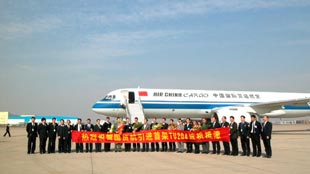
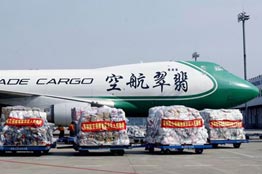
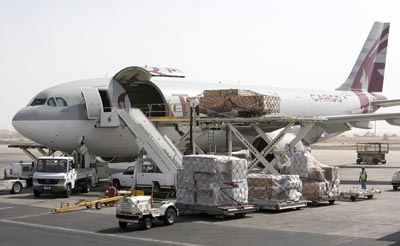 Even
at US$50 per barrel, the Gulf Cooperation Council (GCC) states would
earn a cumulative US$4.7 trillion by 2020, or 2.5 times their earnings
over the last 14 years.
Even
at US$50 per barrel, the Gulf Cooperation Council (GCC) states would
earn a cumulative US$4.7 trillion by 2020, or 2.5 times their earnings
over the last 14 years.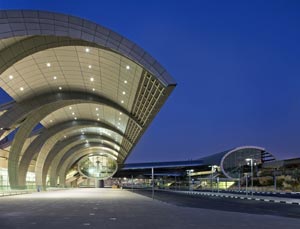 Emergence
Of A New Middle Class
Emergence
Of A New Middle Class 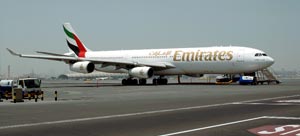 Globalization
may just have been, in the past, a different word for westernization,
but no longer—a new wave of globalization is in place, and emerging
market MNCs are now exporting their brand of capitalism to the West.
Tata, China Mobile and Gazprom are now familiar names and behind them
are numerous other companies looking to secure their place on the global
stage.
Globalization
may just have been, in the past, a different word for westernization,
but no longer—a new wave of globalization is in place, and emerging
market MNCs are now exporting their brand of capitalism to the West.
Tata, China Mobile and Gazprom are now familiar names and behind them
are numerous other companies looking to secure their place on the global
stage. 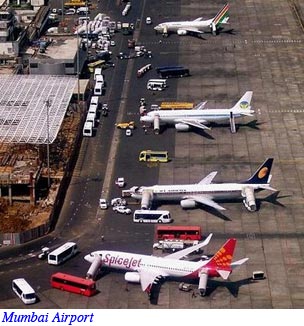 It
has also had effects, evidenced by some very high-profile activities
across numerous sectors: Lenovo, Mittal and Cemex becoming household
names for their acquisition activities with IBM, Arcelor and RMC respectively;
Wipro and Infosys challenging the dominant IT outsourcing providers;
Embraer challenging Boeing’s and Airbus’ dominance in certain
segments; and TNK-BP and Gazprom showing their financial and political
strength.
It
has also had effects, evidenced by some very high-profile activities
across numerous sectors: Lenovo, Mittal and Cemex becoming household
names for their acquisition activities with IBM, Arcelor and RMC respectively;
Wipro and Infosys challenging the dominant IT outsourcing providers;
Embraer challenging Boeing’s and Airbus’ dominance in certain
segments; and TNK-BP and Gazprom showing their financial and political
strength.








 First
of a series…
First
of a series…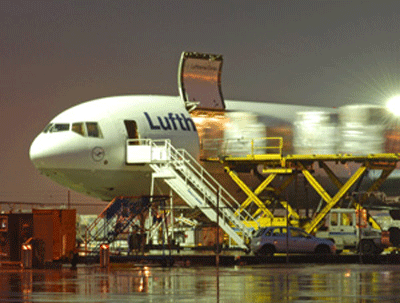 MEGATREND
#1:
MEGATREND
#1:  Leading
cargo events is IATA World Cargo Symposium held this year in Bangkok
Thailand March 2-5,2009.
Leading
cargo events is IATA World Cargo Symposium held this year in Bangkok
Thailand March 2-5,2009. The
CNS Partnership Conference is another one that yours truly has participated
in for many years in various capacities and which has lost its ways
in my humble opinion.
The
CNS Partnership Conference is another one that yours truly has participated
in for many years in various capacities and which has lost its ways
in my humble opinion. The
aggressive stance of the U.S. authorities in the fuel surcharge scandals
didn’t help and kept foreign attendance to a minimum.
The
aggressive stance of the U.S. authorities in the fuel surcharge scandals
didn’t help and kept foreign attendance to a minimum. Air
Cargo Americas has been a personal favorite of mine because it has always
succeeded in blending the right mix of business, shop talk, networking
and while never flashy, its solid exhibitions had participants mingling
and walking the aisles throughout the entire event without needing to
be prodded.
Air
Cargo Americas has been a personal favorite of mine because it has always
succeeded in blending the right mix of business, shop talk, networking
and while never flashy, its solid exhibitions had participants mingling
and walking the aisles throughout the entire event without needing to
be prodded.